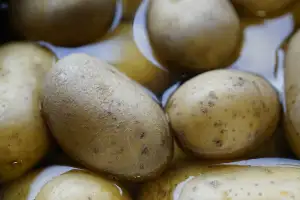Unlock the Magic of Instant Yeast: Speed Up Your Baking Game!

Instant yeast, also known as fast-rising or quick-rise yeast, is a type of dry yeast that is specially formulated to dissolve quickly and easily activate in recipes without the need for proofing. Unlike active dry yeast, which requires proofing in warm water before use, instant yeast can be added directly to the dry ingredients in your recipe. This makes it a convenient and time-saving option for home bakers looking to streamline their baking process. Instant yeast is known for its consistent performance and ability to produce reliable results in a shorter amount of time compared to other types of yeast.
Differences between Instant Yeast and Active Dry Yeast
Instant yeast and active dry yeast are both leavening agents used in baking, but they have some key differences. Instant yeast is a more finely milled form of yeast that is designed to be mixed directly with the dry ingredients in a recipe without needing to be activated in water first. On the other hand, active dry yeast needs to be dissolved in warm water before being added to the dough. Instant yeast typically has smaller granules and can be mixed directly into the flour, saving time and eliminating the need for proofing. Additionally, instant yeast tends to have a longer shelf life than active dry yeast due to its lower moisture content.
Benefits of Instant Yeast in Baking
**Benefits of Instant Yeast in Baking**
Instant yeast offers several advantages that make it a popular choice among bakers. One key benefit is its convenience - as the name suggests, instant yeast works quickly, allowing for shorter rise times compared to active dry yeast. This can significantly speed up the baking process, making it ideal for those who want to enjoy freshly baked goods in a shorter amount of time.
Another advantage of instant yeast is its ease of use. Unlike active dry yeast, instant yeast can be added directly to the dry ingredients without needing to be dissolved in water first. This simplifies the baking process and reduces the risk of activating the yeast improperly.
Additionally, instant yeast tends to have a longer shelf life than active dry yeast, thanks to its smaller granules and lower moisture content. This means that you can store instant yeast for longer periods without worrying about it losing its effectiveness.
Overall, the benefits of using instant yeast in baking include faster rise times, convenience, ease of use, and longer shelf life - all of which contribute to a more efficient and enjoyable baking experience.
How to Use Instant Yeast in Recipes
When using instant yeast in recipes, there is no need to activate it in warm water before adding it to the dry ingredients. Simply mix the instant yeast directly with the flour and other dry ingredients. Instant yeast can be added directly to the dough, making the rising process faster and more efficient compared to active dry yeast. Remember to follow the recipe instructions carefully to ensure that the dough rises properly and yields delicious results.
Storage and Shelf Life of Instant Yeast
To maintain the quality and effectiveness of instant yeast, it is crucial to store it properly. Instant yeast should be kept in a cool, dry place away from moisture and heat. Once opened, it is best stored in an airtight container or resealable bag in the refrigerator or freezer. When stored correctly, instant yeast can last up to 2 years beyond its expiration date. It is essential to check the expiration date on the package before use to ensure optimal results in baking. Avoid exposing instant yeast to extreme temperatures or humidity, as this can shorten its shelf life and affect its performance in recipes.
Tips for Successfully Baking with Instant Yeast
1. Use lukewarm liquids: When activating instant yeast, use liquids that are around 110°F (43°C). This helps to wake up the yeast and get it working quickly.
2. Mix well: Ensure that the instant yeast is evenly distributed throughout the dough. This will help with consistent rising and a uniform crumb structure.
3. Avoid direct contact with salt: Salt can inhibit yeast activity, so it's best to add salt separately from the yeast when mixing ingredients.
4. Proof if unsure: If you're uncertain about the viability of your instant yeast, proof it by dissolving it in warm water with a pinch of sugar. It should start bubbling within 5-10 minutes.
5. Adjust rising times: Instant yeast works faster than active dry yeast, so be prepared for shorter rising times when using recipes that call for instant yeast.
6. Store properly: Keep instant yeast in an airtight container in the refrigerator or freezer to extend its shelf life and maintain its potency.
7. Experiment and practice: Baking with instant yeast may require some trial and error to get accustomed to its speed and behavior, so don't be afraid to experiment and practice with different recipes.
By following these tips, you can confidently incorporate instant yeast into your baking routine and enjoy quicker, more reliable results in your homemade breads, pastries, and more.
In conclusion, instant yeast is a game-changer in the world of baking. Its quick activation, no need for proofing, and ability to be directly added to dry ingredients make it a convenient choice for both amateur and professional bakers. The longer shelf life and consistent performance of instant yeast also add to its appeal. By understanding how to properly use and store instant yeast, you can elevate your baking game and enjoy delicious homemade breads, pastries, and more with ease. So next time you're in the kitchen, consider reaching for instant yeast to unlock the magic of speedy and successful baking!
Published: 07. 04. 2024
Category: Food



